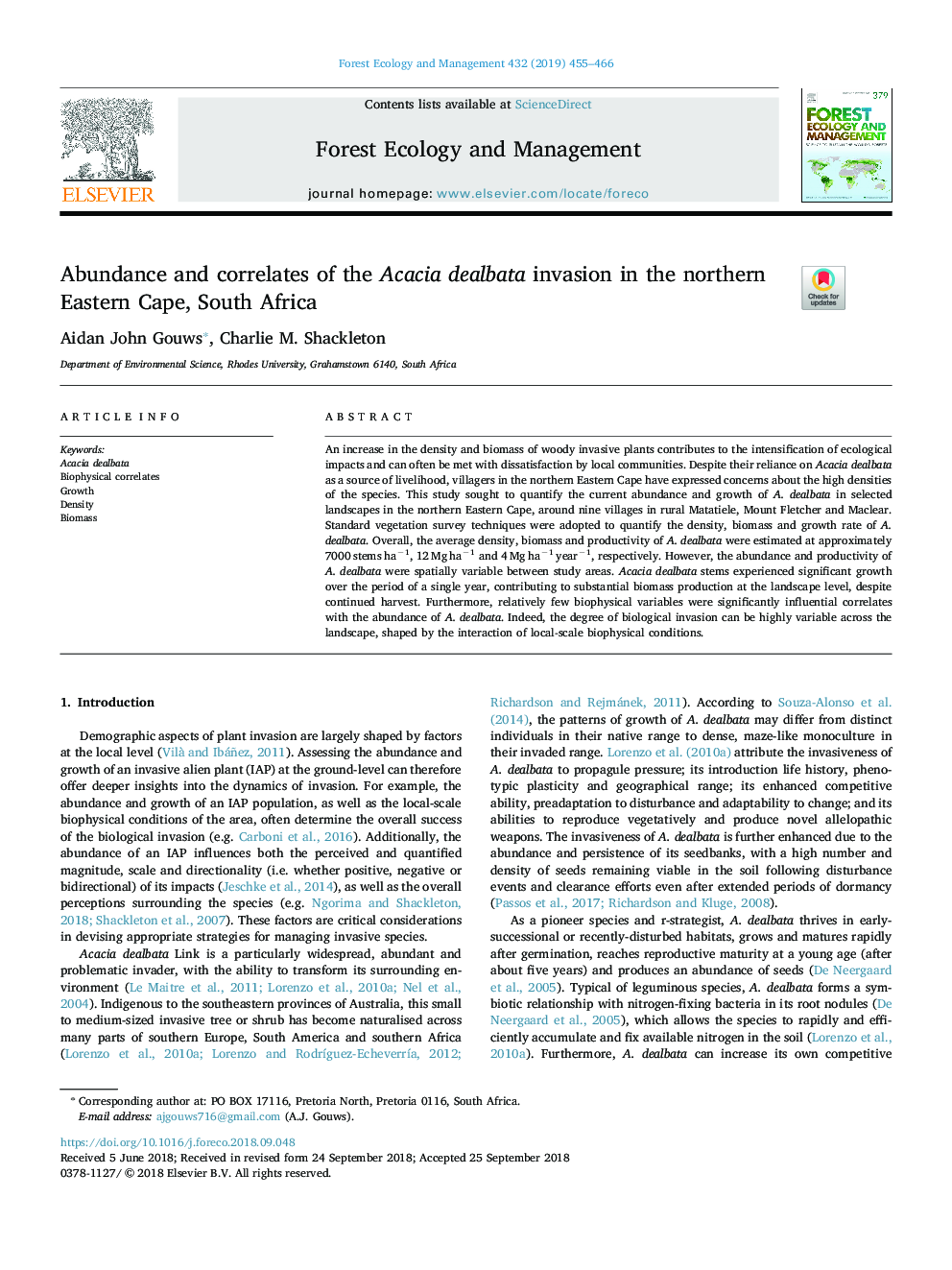| Article ID | Journal | Published Year | Pages | File Type |
|---|---|---|---|---|
| 11028363 | Forest Ecology and Management | 2019 | 12 Pages |
Abstract
An increase in the density and biomass of woody invasive plants contributes to the intensification of ecological impacts and can often be met with dissatisfaction by local communities. Despite their reliance on Acacia dealbata as a source of livelihood, villagers in the northern Eastern Cape have expressed concerns about the high densities of the species. This study sought to quantify the current abundance and growth of A. dealbata in selected landscapes in the northern Eastern Cape, around nine villages in rural Matatiele, Mount Fletcher and Maclear. Standard vegetation survey techniques were adopted to quantify the density, biomass and growth rate of A. dealbata. Overall, the average density, biomass and productivity of A. dealbata were estimated at approximately 7000â¯stemsâ¯haâ1, 12â¯Mgâ¯haâ1 and 4â¯Mgâ¯haâ1â¯yearâ1, respectively. However, the abundance and productivity of A. dealbata were spatially variable between study areas. Acacia dealbata stems experienced significant growth over the period of a single year, contributing to substantial biomass production at the landscape level, despite continued harvest. Furthermore, relatively few biophysical variables were significantly influential correlates with the abundance of A. dealbata. Indeed, the degree of biological invasion can be highly variable across the landscape, shaped by the interaction of local-scale biophysical conditions.
Keywords
Related Topics
Life Sciences
Agricultural and Biological Sciences
Ecology, Evolution, Behavior and Systematics
Authors
Aidan John Gouws, Charlie M. Shackleton,
